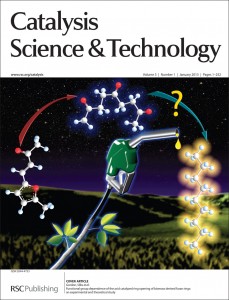Catalysis Science & Technology (CS&T) is pleased to announce our latest Impact Factor has increased to 5.726*.
Catalysis Science & Technology is dedicated to publishing the highest impact articles reporting cutting-edge developments across the catalysis science community. Original research articles report new catalytic discoveries that are a significant advance on previously published work, bringing conceptual advances, or molecular insights to catalytic processes and systems. The journal places equal focus on publications from the heterogeneous, homogeneous, organocatalysis and biocatalysis communities, thus appealing to both academic and industrial scientists.
Led by Editor-in-chief Javier Pérez-Ramírez (ETH Zurich, Switzerland), our dedicated international team of Associate Editors welcome urgent Communications, high quality Papers, and authoritative Perspectives and Mini-reviews. The broad scope and interdisciplinary nature of the research published in the journal, coupled with rigorous peer review, ensures your work will attract the attention it deserves.
We would like to thank all our authors, readers, reviewers and Editorial & Advisory Board members for their continued support.
Find the all the RSC’s journals newly published 2018 Impact Factors* here.
*The Impact Factor provides an indication of the average number of citations per paper. Produced annually, Impact Factors are calculated by dividing the number of citations in a year, by the number of citeable articles published in the preceding two years. Data based on 2018 Journal Citation Reports (Clarivate Analytics, 2019)















